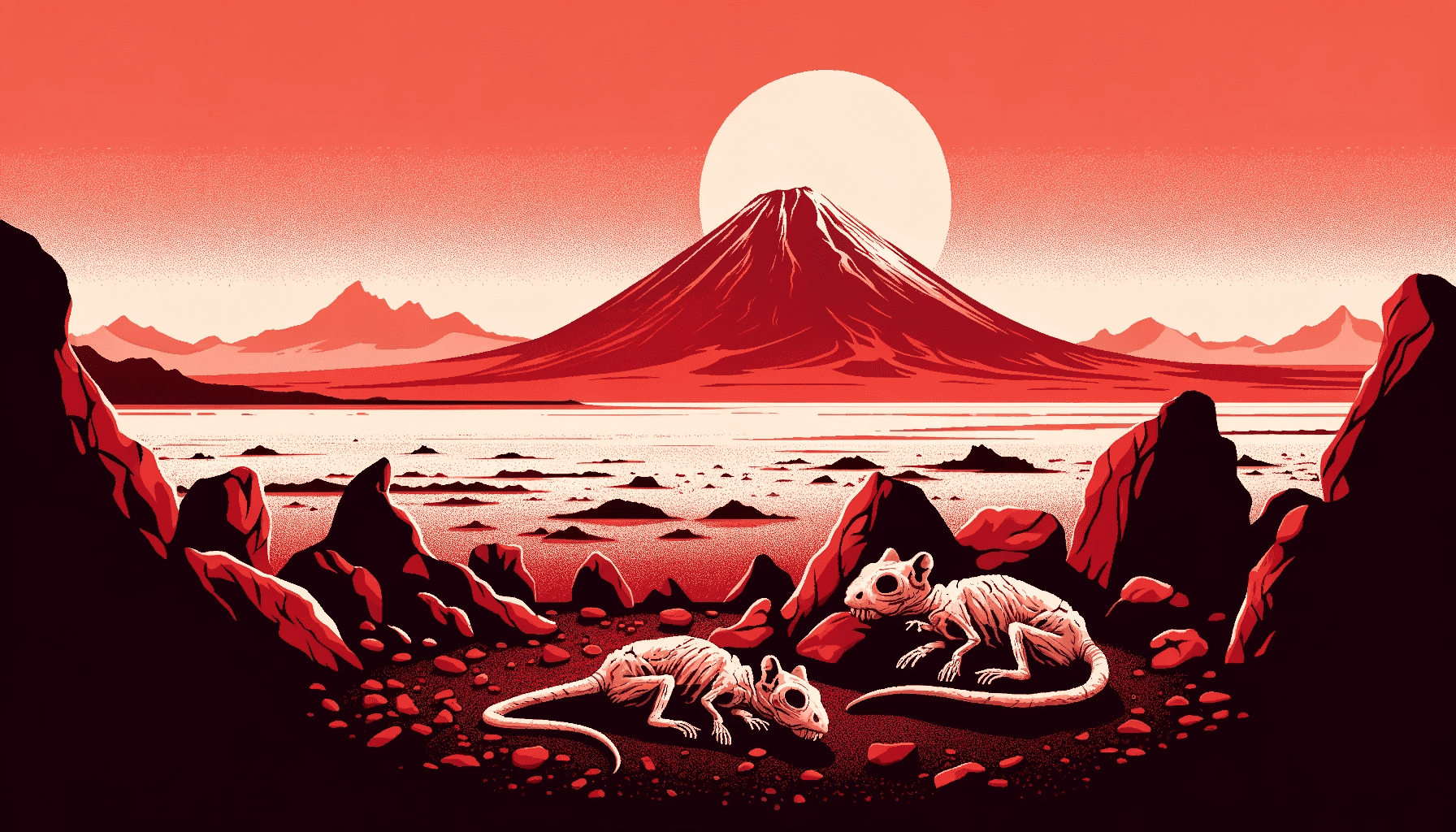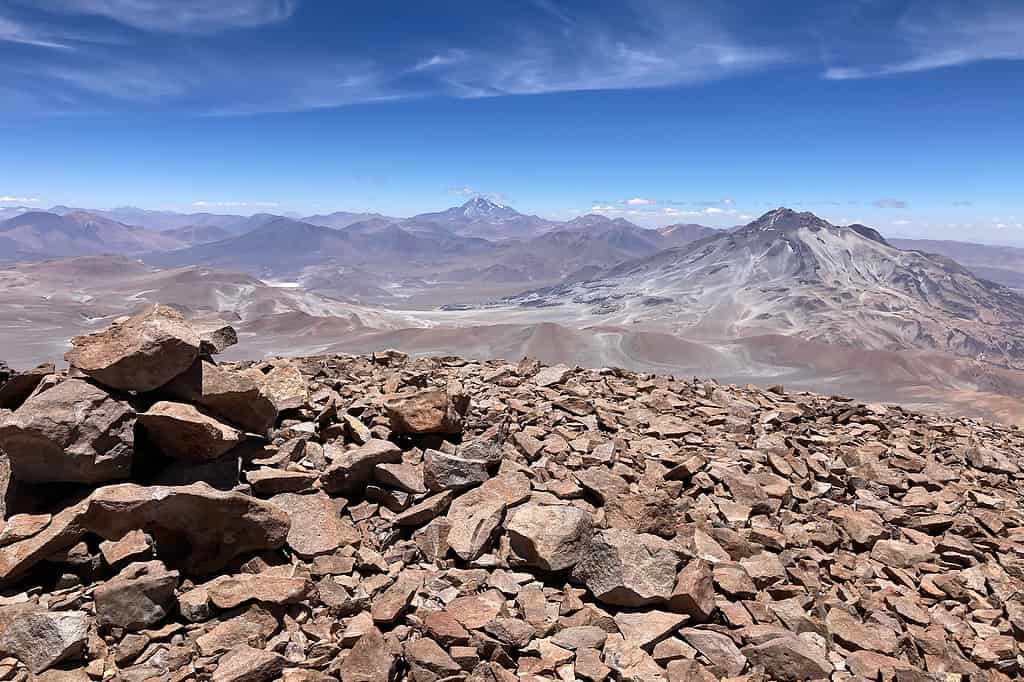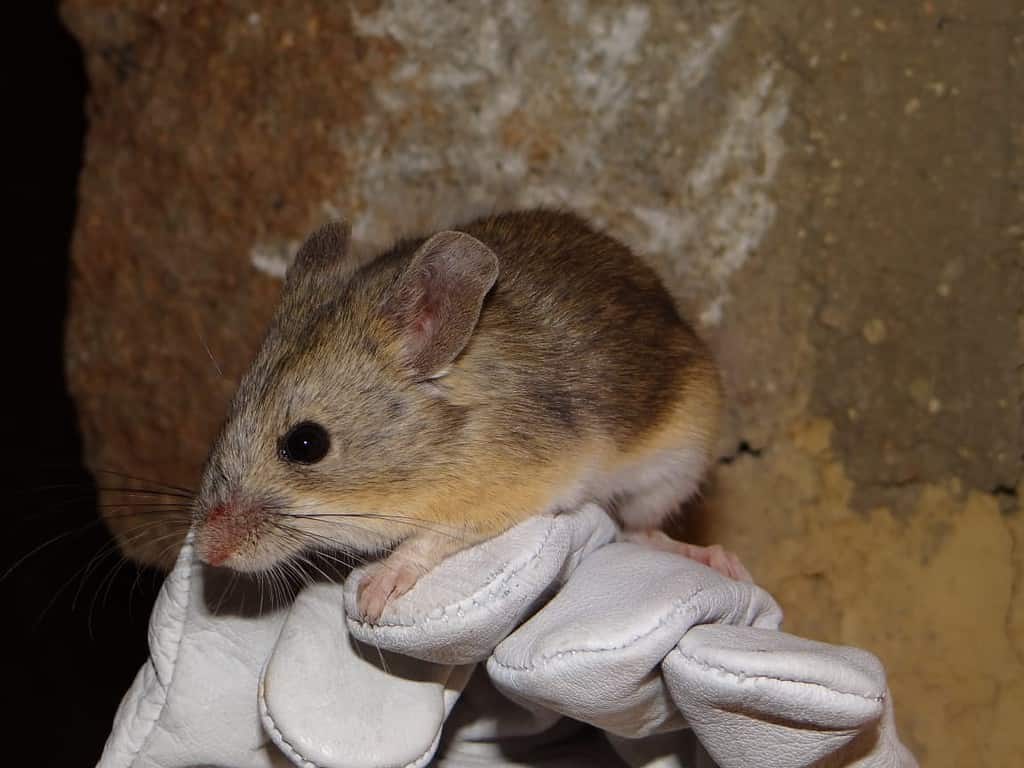
It’s not Mars but it’s the closest thing to it we have on Earth. The dry summits of the volcanoes in the Puna de Atacama of Chile and Argentina have a thin atmosphere and freezing temperatures that resemble the Red Planet. At such extreme elevations, it’s hard to think of any mammalian life. However, a new study is now challenging this.
Archaeologists first reported finding mouse cadavers during expeditions to Andean peaks in the 1970s. They figured that the rodents hitched a ride with the Incas to what they considered sacred sites, perhaps participating in animal sacrifices. However, in 2020, researchers captured a live specimen of a leaf-eared mouse for the first time.
Now, the same group has discovered mummified mice in those barren environments at over 6,000 meters (20,000 feet) above sea level, expanding the physiologic limits of vertebrate life on Earth. They found the first mouse mummy on the summit of Volcán Salín by chance at a rock pile. But, once they knew what they were looking for, other mice turned up.
“Mammals could be living on the summits of volcanoes in such an inhospitable, Mars-like environment,” Jay Storz, study author and biologist, said in a news release. “The fact that mice are actually living at such elevations demonstrates that we have underestimated the physiological tolerances of small mammals.”

Mice in the Andes
The researchers have so far searched 21 volcano summits, including 18 with elevations of over 6,000 meters (20,000 feet), and found 13 mummified mice. Radiocarbon dating showed that the mice of two volcanoes were a few decades old, while those from a third site were up to a staggering 350 years old.

The mummified state of the mice also helped preserve their DNA, allowing the researchers to compare genetic variation among leaf-eared mice collected in the lowlands, midlands, and highlands of the Atacama Desert. They wondered whether the genomes of the mummified mice could represent a more adapted subpopulation of the rodent.
“Our genomic data indicate no: that the mice from the summits, and those from the flanks or the base of the volcanoes in the surrounding desert terrain, are all one big happy family,” Storz said in a news release. In fact, the team found two parts of mummies that were closely related, possibly siblings or parents and offspring.
Paired with the recent revelation of additional live specimens and the presence of mouse burrows in the elevated regions of the Puna de Atacama, also known as the Atacama Plateau, Storz suggests that the leaf-eared mouse isn’t merely exploring the volcanic summits. Instead, it appears to be actually inhabiting them in some way.
The finding raises further questions, including how mammals can live in a world of rock, ice, and snow where there’s about half the oxygen available at sea level. The researchers are now looking at whether the mice have special physiological traits that allow them to survive in such conditions.
The study was published in the journal Current Biology.









